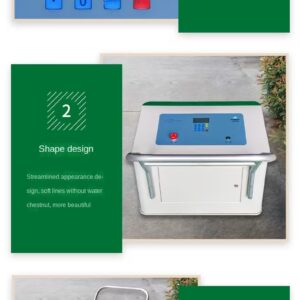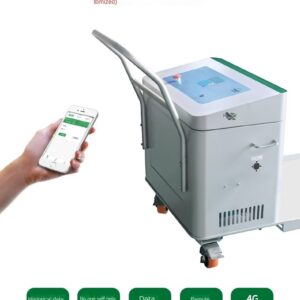The WSS series bimetallic thermometer is an on-site detection instrument for measuring low and medium temperatures. Bimetallic thermometers can directly measure the temperature of liquid, vapor, and gas media within the range of -80 ℃ to+500 ℃ in various production processes. Structural principle: A bimetallic thermometer is a temperature sensing device made by winding a threaded bimetallic strip into a spiral shape, and installing it in a protective sleeve. One end is fixed, called the fixed end, and the other end is connected to a thin shaft, called the free end. A pointer is installed on the free end axis. When the temperature changes, the free end of the temperature sensing device rotates accordingly, driving the pointer on the thin shaft to produce an angle change, indicating the corresponding temperature on the dial. Classification: Bimetallic thermometers can be divi…
Description
The WSS series bimetallic thermometer is an on-site detection instrument for measuring low and medium temperatures. Bimetallic thermometers can directly measure the temperature of liquid, vapor, and gas media within the range of -80 ℃ to+500 ℃ in various production processes. Structural principle: A bimetallic thermometer is a temperature sensing device made by winding a threaded bimetallic strip into a spiral shape, and installing it in a protective sleeve. One end is fixed, called the fixed end, and the other end is connected to a thin shaft, called the free end. A pointer is installed on the free end axis. When the temperature changes, the free end of the temperature sensing device rotates accordingly, driving the pointer on the thin shaft to produce an angle change, indicating the corresponding temperature on the dial. Classification: Bimetallic thermometers can be divided into three types based on the direction of connection between the pointer plate and the protective tube: axial type, radial type, and universal type. Characteristics: The biggest advantage of bimetallic thermometers is their good seismic performance and durability, but their accuracy is relatively low and can only be used in industry, with an accuracy level of 1-2.5. Bimetallic thermometers are suitable for on-site detection of medium and low temperatures, and can directly measure the temperature of gases, vapors, and liquids with clear readings and good mechanical strength
The seismic resistant electric contact bimetallic thermometer is composed of bimetallic sheets wound in a circular bending shape. When one end expands due to heat, it drives the pointer to rotate, and the working instrument displays the corresponding temperature value, while preventing environmental vibration. The bimetallic thermometer is filled with silicone oil or separated from the measuring part to achieve shock resistance. Seismic resistant bimetallic thermometers are divided into two types: integrated seismic resistant electric contact bimetallic thermometers and separated seismic resistant electric contact bimetallic thermometers. Main technical parameters: (1) Execution standard: JB/T8803-1998 GB3836-83 (2) nominal diameter of dial: 60 100 150 (3) accuracy level: (1.0), 1.5 (4) thermal response time: ≤ 40S (5) Protection level: IP55 (6) Angle adjustment error: The angle adjustment error should not exceed 1.0% of its range. (7) Backlash: The backlash should not exceed the absolute value of the basic error limit. (8) Repeatability: The repeatability limit range should not exceed 1/2 of the absolute value of the basic error limit. Universal type main technical parameters: (1) nominal diameter of the dial: 100; 150 (2) Accuracy level: 1.0, 1.5 (3) Connection size: M20x1.5, NPT1/2 (4) Thermal response time: ≤ 40s (5) Protection level: IP55 Integrated bimetallic thermometer Overview Integrated bimetallic thermometer combines the remote signal transmission function of thermal resistance or thermocouple with the on-site indication function of bimetallic thermometer. It can meet both on-site temperature measurement requirements and long-distance transmission requirements. Remote bimetallic thermometer can directly measure the temperature of liquid, vapor, gas media and solid surfaces within the range of -40~+600 ℃ in various production processes. Performance features: 1. It has the characteristics of small temperature probe, high sensitivity, linear scale, and long service life. 2. It has multiple functions such as remote output resistance signal (PT100), earthquake resistance, corrosion resistance, and high-power switch signal. 3. The structural form is the same as similar international products and can replace imports. Technical parameters: 1. Temperature measurement range -40~600 ℃ 2. Environmental temperature -10~55 ℃ 3. Relative humidity ≤ 95% 4. Accuracy level 1.5 5. Time constant ≤ 60S6. Probe pressure resistance ≤ 6Mpa 7. Probe diameter: φ8-10mm、 Movable external thread: M27*28、 Thermal resistance PT100 (single or dual output) or 4-20mA current output. Protection level: IP55 thermal sleeve type thermal sleeve type bimetallic thermometer. Thermal sleeve type bimetallic thermometer can be matched with various installation sleeves to meet different pressure level requirements. It can directly measure the temperature of liquid, steam, gas media and solid surfaces within the range of -80-+500 ℃ in various production processes. Widely used in industries such as petroleum, chemical, metallurgical, textile, and food.













